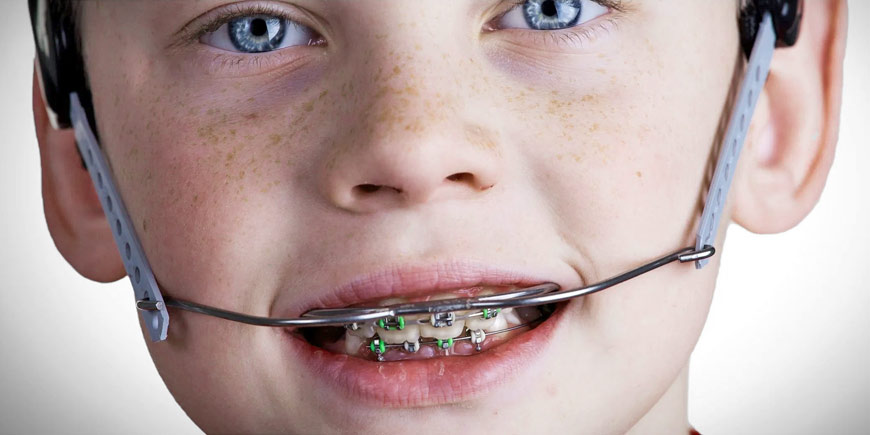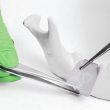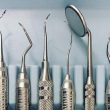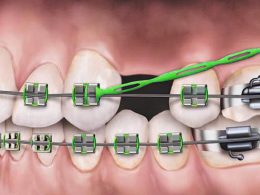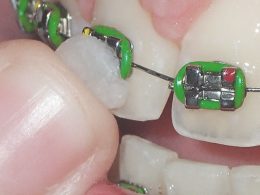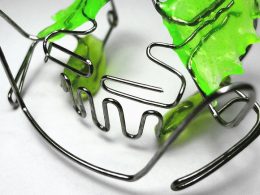Table of Contents
Most people only think of Orthodontics as a specialty of Dentistry that focuses solely on straightening the teeth to improve the smile. But Orthodontists are also concerned with the position of the facial bones that determine the shape and appearance of the jaws and face. In particular, Dentofacial Orthopedics is the dental branch that focuses on improving the position and dimensions of the bones that house the teeth.
According to the concept of the American Dental Association (ADA), Dentofacial Orthopedics is the branch of Dentistry that has to do with the evaluation, development and alignment of the maxilla, mandible and other bones of the craniofacial massif; with the consequent improvement in the airways, the muscle tone and neurological activity.
Dental orthopedic treatment is typically performed with devices that generate very heavy forces, capable of modifying and shaping craniofacial growth. It is also known by other names: cranio-mandibular orthopedics, gnathological orthopedics and mandibular orthopedics.
The Jawbones: The Pattern of Your Smile
As a child grows, both the maxilla (upper jaw) and mandible (lower jaw) develop in three dimensions. This growth will determine the final morphology of the middle and lower thirds of the face, since these bones are closely related to the nasal region and the cheekbones. According to the vast majority of studies, this growth stops in girls around the age of 15, while boys can continue to grow until they are 20.
Sometimes, the maxilla and mandible grow at different speeds and create alignment problems between the upper and lower teeth. Together, these types of conditions are known as skeletal malocclusions or dentofacial deformities, when they are so severe that they affect the facial appearance and normal psychological development of the person.
Ideally, the upper jaw should be slightly forward and slightly wider than the mandible. Underbites (where the mandible protrudes), overbites (where the maxilla protrudes) and other occlusion problems, can be caused by factors such as breathing difficulties and finger sucking habits. However, the genetic or hereditary factor is usually the most common cause of this type of malocclusions.
Identifying Growth Problems
Abnormal growth of the jaws can begin to be identified as early as two years of age, once all the primary teeth have erupted. However, the right time to start treatment is usually the period of mixed dentition, when the child has temporary and permanent teeth in the mouth. This usually happens between the ages of eight and nine. At that time, the Dentist should refer the child to an Orthodontist to take impressions and facial X-rays, and can develop an appropriate diagnosis and treatment plan.
Differences Between Dental Malocclusions and Skeletal Malocclusions
Dental malocclusions have their origin only in the irregular arrangement of the teeth within the dental arch. Crowding, spacing and eruption problems, rotations, misalignment, improper inclinations, protrusion and over-eruptions; are the most frequent manifestations of this type of anomalies.
In contrast, skeletal malocclusions occur as a result of alterations in craniofacial growth and development, and are characterized by inappropriate shapes, sizes, and relationships of the facial and maxillary bones.
Let us imagine a building for a moment. To remodel it, it is not the same to have to paint, change floors, windows or any other aesthetic element; to enter to correct its bases, columns and structural foundations. The same happens in the case of malocclusions.
Purely dental malocclusions are much easier to treat, at any time in life and only with the use of braces or conventional fixed appliances. On the contrary, skeletal ones require special orthopedic appliances and a specific age of treatment, which is located before puberty or sexual maturity, before the adolescent finishes growing and his facial bones are definitively formed.
If they are not corrected in time by means of growth modification, maxillofacial (orthognathic) surgery is almost always the only possibility to treat a skeletal malocclusion in the adult patient. In general, this type of treatment also involves the use of braces and a surgical prediction tracing that allows surgeons to determine the most favorable bone positions, according to pre-established standards. The intervention will always require general anesthesia in a surgical block in a hospital environment.
Dentofacial Orthopedic Appliances
If a child’s bite problems require orthopedic intervention, an Orthodontist will be able to use a wide variety of appliances to modify the speed, direction and amount of jaw growth. Dentofacial Orthopedics appliances can be fixed or removable. Some of the most common or most used appliances or devices are:
- Palatal Distractor This fixed device slowly pulls the cartilage of the intermaxillary suture to widen an upper jaw that is too narrow to allow proper dental alignment.
- Bite Block A fixed bite block uses the force of the occlusion to biologically and gradually modify growth, move teeth and correct malocclusions.
- Herbst Appliance This mandibular repositioning appliance is used to stimulate the anterior growth of the jaw, ensuring that the bone and lower teeth catch up with the growth of the maxilla and upper teeth.
- Orthodontic Headgear It is a device that goes outside the mouth and rests on the patient’s neck to stop the excessive growth of the upper jaw. It is removable and is usually used between 12 and 14 hours a day, until skeletal balance is restored.
- Protraction Facemask It is a type of extraoral appliance that is used to treat class III malocclusion or mandibular prognathism, often characterized by poor anterior development of the upper jaw. It consists of a metal stand that is placed in front of the patient’s face, with supports on the forehead and chin. In it, elastics are hooked that go to the teeth and exert forward and downward forces, to stimulate the anterior growth of the upper jaw. Its effect is totally opposite to that of the headgear, which is why it is also known as the reverse headgear.
- Hybrid Appliances Hybrid appliances are specifically and individually tailored to exploit natural facial growth and development processes, resulting in appliance designs that are uniquely and exclusively tailored to the needs of each patient and each malocclusion.
Dentofacial Orthopedics appliances are generally used together with conventional brackets to, at the same time modify growth, correct the position of the teeth, the shape of the arches and the occlusion; in order to achieve the best possible results.
Can Adults Benefit From Dentofacial Orthopedics?
An adult who wants to correct his bite will not have the same range of possibilities as a growing child, but there are still solutions available to him. Skeletal problems can only be corrected, conservatively, before development or sexual maturity. Afterwards, there will no longer be growth to modify, nor orthopedic change to seek.
Dentofacial Orthopedics treatments are only indicated in the prepubertal stage of childhood, before the end of the period of greatest active growth.
Afterwards, the only two possibilities to correct a skeletal malocclusion or dentofacial deformity are camouflage orthodontic treatments in mild cases and orthognathic surgery in more severe ones. The process of aligning and decompensating the dental inclinations (presurgical orthodontics), undergoing orthognathic surgery and completing orthodontic treatment (postsurgical orthodontics); requires approximately 2 to 3 years of time.
Is Dentofacial Orthopedics the Same as Functional Orthopedics of the Jaws?
No way!
They are two totally different forms and philosophies of treatment. Dentofacial Orthopedics is based on the use of external heavy forces, generated by artificial appliances or devices such as elastics, screws and springs.
The Functional Orthopedics of the Jaws bases its philosophy solely on the use of functional forces, which are those generated by the muscles that move the jaw during its normal function, and which according to its supporters, are sufficient to modify the pattern of facial growth.
“The Modification of Maxillofacial Growth, Is Only Possible Before Puberty or Sexual Maturity”.
DENTAL TIP
At What Age Is a First Consultation with the Orthodontist Recommended?
Just to evaluate the facial growth pattern and rule out the existence of any skeletal malocclusion, we always recommend our patients to bring their children to an Orthodontic consultation before the age of 9, so that if necessary, we can count with enough time to treat the patient, correct his growth with orthopedics, ensure his good physical appearance during adolescence and avoid major surgical interventions such as orthognathic surgery.
Ready to Finally Get the Dental Treatment You Deserve?
All you have to do is send us your dental basic studies so that our professional team can analyze your case and offer you the best treatment option, many times impossible to pay in your home country.
Lower pricing does not always mean reduced quality. DENTAL VIP Specialists are trained in the most modern dental techniques, and we are equipped with state-of-the-art instruments.
We will offer the best price at the best quality for you in dental implants, all on 4, crowns and bridges, oral surgery, zygomatic implants, aesthetic dentistry, endodontics, full mouth reconstruction and other highly specialized treatments.
If you are considering coming to Venezuela for dental work, contact us for more information on how we can help you.
Our WhatsApp Business contact +58 414-9033547 and our email info@dentalvipcaracas.com are at your absolute and complete disposal to make inquiries and provide you with the best possible guidance in Dentistry.






